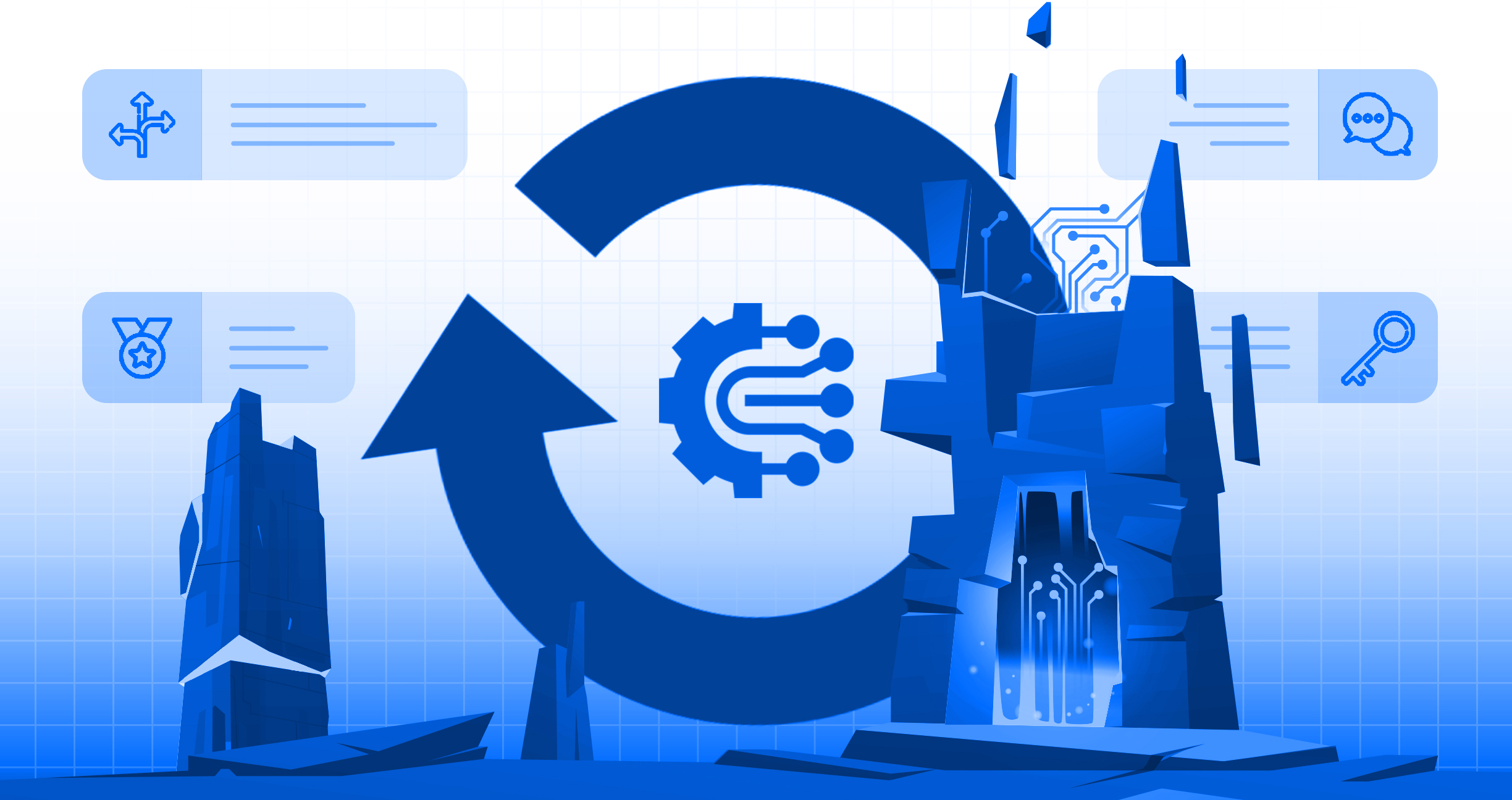Do more with less! Digital Transformation Best Practices.

- 21 May 2023
- Blog
- 0 Comments
The past three years have been marked by a challenging and tumultuous period of global transformation. Even after the pandemic subsides, we find ourselves in a new era of ongoing turbulence. The expected stability and predictability have given way to a new era of continuous disruption and change.
The pandemic has acted as a catalyst for digital transformation, resulting in a remarkable leap of 7 years in global digital adoption. This unprecedented shift has prompted leading companies in various sectors and industries to intensify their efforts, increasing investments in software-enabled digital transformations.
Implementing digital transformations, whether it involves digitizing an entire company or establishing a digital start-up within an organization, presents formidable challenges. It is a common occurrence for these transformations to encounter obstacles and face difficulties in sustaining the achieved improvements over time.
Transformations are hard, and digital ones are harder. But the results from the most effective transformations point to some important factors for success.
In today’s rapidly evolving business landscape, numerous companies are embarking on digital transformations to harness the advantages offered by digital technologies or stay competitive in the market. According to a recent survey conducted by McKinsey, over 80% of respondents revealed that their organizations had initiated digital transformation initiatives within the past few years. However, achieving success in these endeavours has proven to be challenging. Previous research has shown that less than one-third of organizational transformations effectively enhance performance and sustain the resulting benefits. Alarmingly, the latest findings indicate an even lower success rate for digital transformations due to some common errors.
Face of Uncertainty
As organizations embark on building digital futures, they are taking significant risks and making substantial investments. Executives expect these endeavours to yield reliable and favorable outcomes that justify the investments made and risks undertaken. However, the unpredictable nature of digital initiatives often leaves organizations in unfamiliar territories.
The keys to success
While having access to modern technologies is undoubtedly important, it is just one piece of the puzzle. Our findings shed light on the crucial aspect of how companies should effectively implement technology-driven changes to distinguish successful digital transformations from the rest.
- Understanding the Core Challenge
- Placing Customers at the Forefront
- Selecting the Right Technology Solution
- A Methodical Approach to Transformation
- Empowering People to Work in New Ways
- Using Agile Methodologies for Seamless Transformation
Understanding the core challenge in digital transformation is crucial for organizations to develop tailored strategies and execute initiatives that address specific barriers. It requires a proactive approach to capitalize on the opportunities presented by the digital landscape. This entails a comprehensive assessment of the organization’s current state, including its technological infrastructure, culture, human resources and skills, and customer expectations.
By understanding the core challenge, organizations can pinpoint the specific areas that need improvement or change. To navigate the core challenge effectively, organizations need to engage stakeholders at all levels: leaders, employees, and customers. By fostering a shared understanding of the core challenge, organizations can align their efforts and develop a clear roadmap for digital transformation initiatives.
The core challenge may vary from one organization to another. While some organizations may struggle with legacy systems, others may face challenges related to data management, cybersecurity, or adjusting to meet the evolving needs and preferences of customers.
Prioritizing the needs, preferences, and satisfaction of customers throughout the transformation process is a key aspect of digital transformation. This helps to leverage digital technologies to understand better and meet customer expectations. This can include implementing customer-centric digital solutions, such as personalized experiences, convenient self-service options, or seamless omnichannel interactions. It involves continuously gathering feedback and iterating on digital initiatives based on customer input to ensure ongoing improvement.
Ultimately, by making customers a focal point of decision-making and cultivating a customer-centric mindset across the organization, businesses can build lasting relationships with their customers and expect a smooth transformation.
It is important to carefully evaluate and choose the technology tools, platforms, or systems that align with the organization’s objectives and can effectively support its digital transformation efforts. By selecting the right technology solution, organizations can lay a strong foundation for successful digital transformation. In that case, it is better to pay attention to the following points.
-
When pursuing digital transformation, it’s important not to invest in the latest technology simply for the sake of digitization. Instead, take a thoughtful approach and gradually replace legacy systems and ensure that the technology selected aligns with the organization’s business goals.
With the rapid advancement of technology, it’s inevitable that certain technologies will become obsolete within a few years. Hence, companies must have a deep understanding of current trends and their potential impact on market dynamics. By staying informed and proactive, organizations can minimize the risks associated with obsolete systems and optimize their investments in the face of evolving technological landscapes. In this regard, it can be beneficial to research current technology trends and enlist the help of X-venture.
To ensure successful digital transformation, it’s important to take a gradual and employee-centric approach. Instead of overwhelming employees with multiple changes simultaneously, focus on transforming one process at a time. Implement digital initiatives in stages, allowing employees to adapt gradually. Rather than forcing change upon them, empower and motivate employees to embrace and adopt the changes willingly. This method helps minimize resistance to change and increases the likelihood of successful digitization.
Remember that digital transformation is an ongoing journey, and flexibility and adaptability are key.
Employees possess valuable insights into workflow challenges, process inefficiencies, and areas where information is lacking. Their input can be instrumental in identifying opportunities for optimizing existing applications or leveraging new technologies effectively. To tap into this potential, here are some key points to consider:

When employees are engaged throughout the entire process, from planning to execution, it increases their sense of ownership and reduces resistance to change. This active involvement promotes the smoother implementation and higher adoption rates of the new initiatives.
By leveraging Agile methodologies, organizations can effectively manage the complexities of digital transformation. Also, by using agile methodologies, a company can improve its digital strategy and better meet customer needs and overcome technical difficulties. It can develop products in smaller parts and release them more often to get feedback quickly from customers.
It’s important to regularly evaluate your digital transformation efforts and make necessary changes to stay on track. Also, encourage employees to come up with new ideas, try out different approaches, and take calculated risks. This will foster innovation, experimentation, and continuous improvement in your digital transformation journey.
Related Posts

The Hidden Key to IT Cost Optimization: How Businesses Use Resource Augmentation to Optimize IT Cost
- Guest Author
- 10 June 2024
What is the PROBLEM? The Economist shows that data has become a critical resource even claiming ..

Reinforce your tech army! Supplementing existing resources with additional resources.
- Guest Author
- 7 August 2023
In a rapidly expanding tech market where users heavily rely on devices and apps, cultivating a ..




